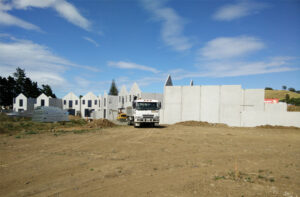Subdividing land in Auckland can be a complex process, but the feasibility depends on your land’s size, zone, and public infrastructure access. Here’s a simplified breakdown:
Zones and Minimum Lot Sizes
- Terrace housing and apartment buildings zone: This zone allows the most development, with buildings up to seven storeys. Resource consent applications with development plans are required.
- Mixed housing urban zone: Minimum lot size is 300sqm, but smaller lots might require development plans. This zone allows for houses up to three storeys or even apartments.
- Mixed housing suburban zone (most common): Minimum lot size is 400sqm, but smaller lots might require development plans. This zone allows for townhouses or two-storey homes.
- Single house zone: Minimum lot size is 600sqm, typically requiring an existing lot of at least 1200sqm for subdivision into two sections.

Before You Begin
- Understand feasibility: Consider factors like site size, physical constraints, public infrastructure access, legal limitations, and potential yield.
- Engage professionals: A surveyor, engineer, and planner are crucial for preparing the scheme plan, ensuring infrastructure servicing, and navigating the consent application process.
Why is Subdividing Land in Auckland so Complex?
Subdividing land in Auckland involves various approvals, including land use consents, building consents, engineering approvals, and legal documents like easements and covenants. Our planners can assist you in managing these complexities.
Our planners can help you to manage risks and avoid pitfalls along the way. Wondering whether you’ll need to register an easement so a new buyer has the right to access a service connection? Or how to prevent losing your view if you subdivide and sell the rear section? We’re here to take the guesswork out of your subdivision plans. Download our 2024 subdivision guide or contact the team directly.







